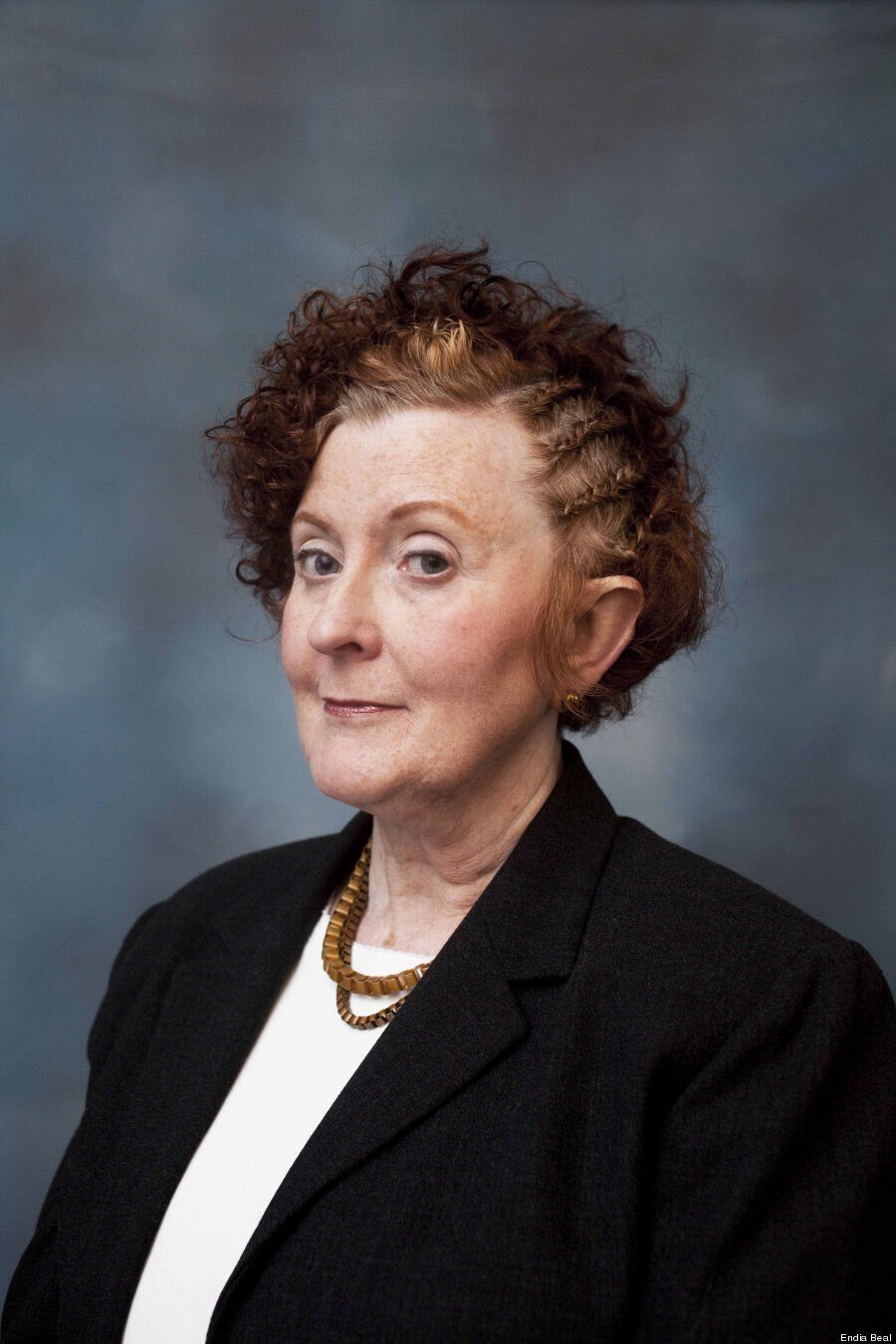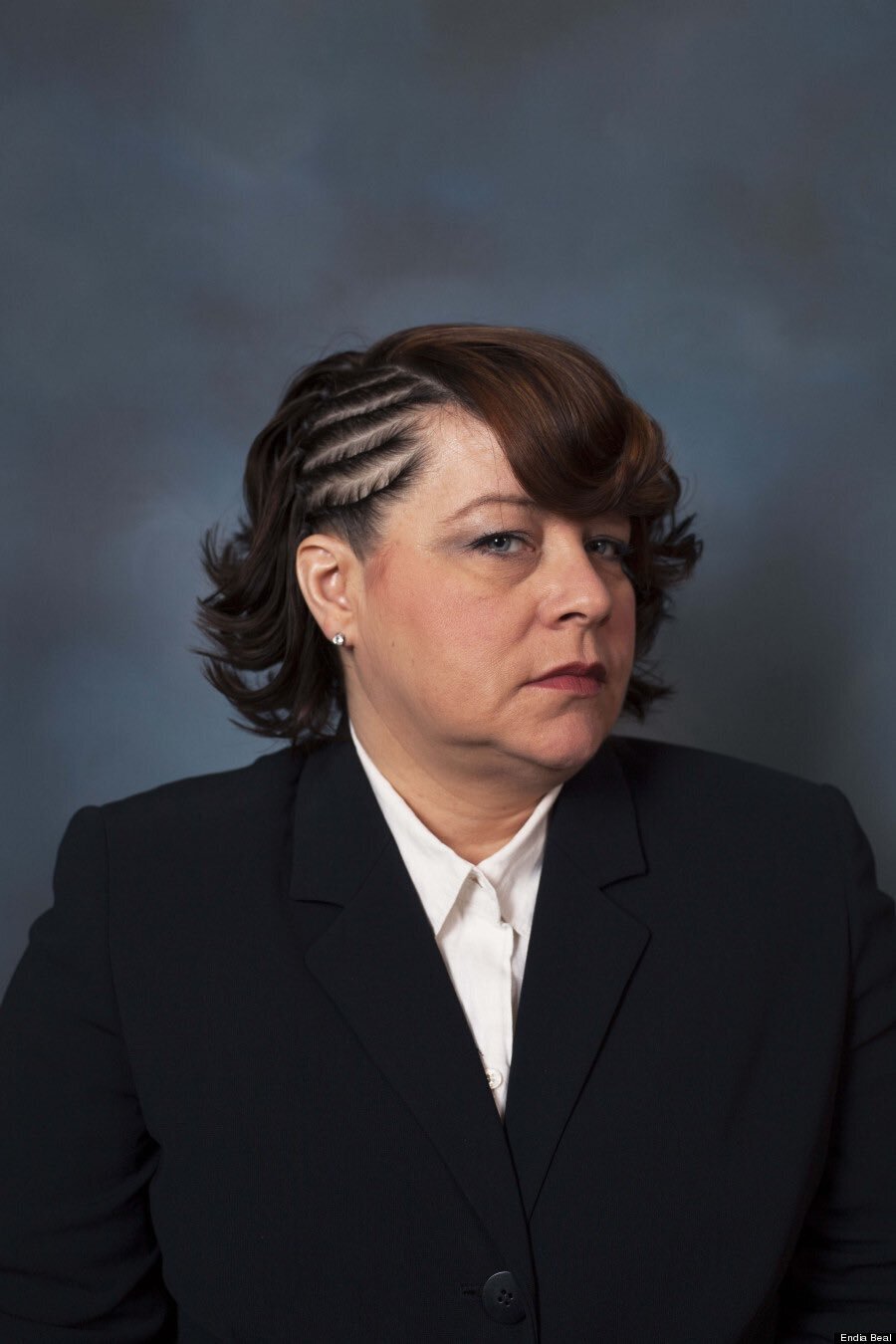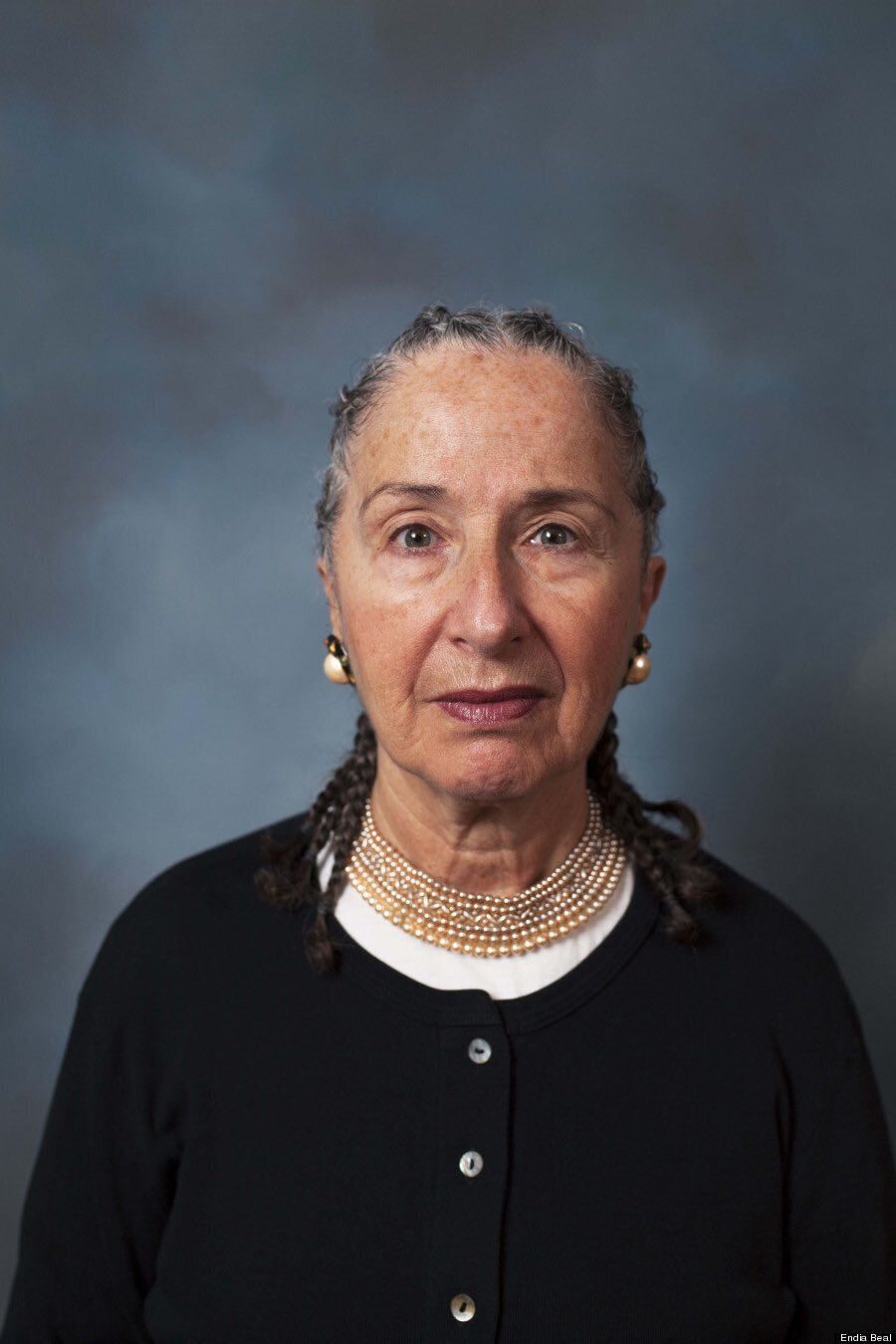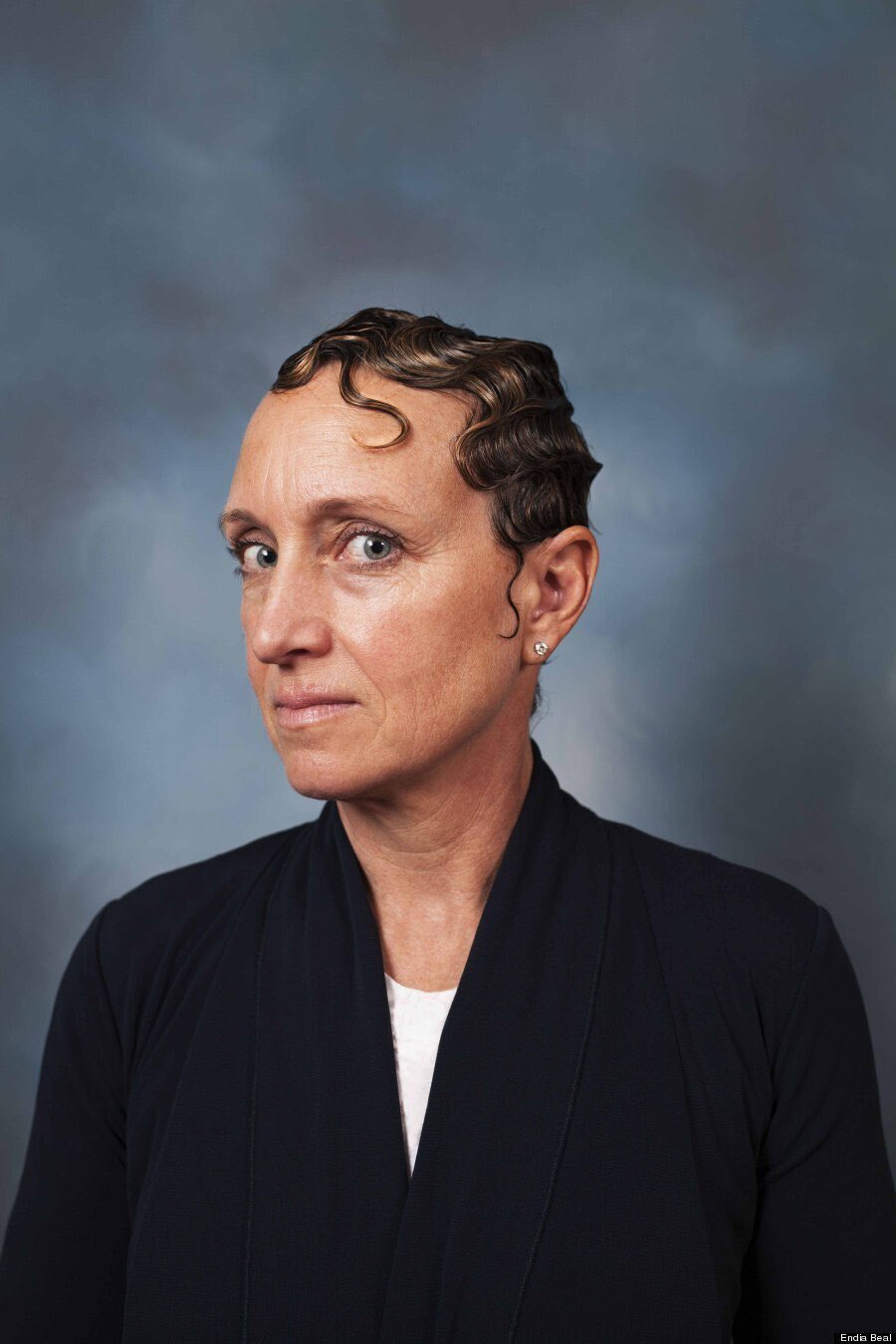“Something big is about to happen”: In Conversation with Endia Beal
By: Bria Woods | Photos above are from the series “Can I Touch It? by Endia Beal.
In her mother’s basement, Endia Beal painted the silhouette of six heads on top of newspaper clippings from her late friend’s obituary. After leaving a party one night, Beal said her friend was fatally shot. She found out at school the next day. She said she withdrew socially from friends and family; this loss left a gash in her heart.
“And so I started putting my unspoken emotions onto canvas. I was doing these paintings in my mother's basement; I had never taken an art class in my life. But there was something about putting these emotions on this canvas that just felt right. It was a way for me to release whatever pain I was feeling inside,” Beal shared. The six heads represent the six men in her life who had been killed by gun violence.
Immediately we learned that one of the first works Beal made was born out of a place of pain and confusion. Art became a vehicle for her to explore the big questions and unknowns in her world. A narrative that many artists and creatives can relate to. Relatability was the word of the hour as Beal coursed through various themes and works in her career. As Black women, we indeed saw ourselves in her internationally acclaimed work.
The phone rang...she answered the call.
Listening to Endia Beal is like taking a day trip to the land of milk and honey. Her whole existence is poetic and lyrical. The timbre of her voice, the lilt in her phrasing. Her presentation and energy transports you from a zoom call and takes you to an intimate den fit for listening to slam poetry.
Within seconds Beal set the tone and familial mood of the nearly ninety-minute virtual discussion.
While Beal studied art and art history at UNC-Chapel Hill, she constantly grappled with the unsavory narrative surrounding the crumbling poor Black neighborhoods in the city’s Southside. She saw a dichotomy between what was covered in the news and what she saw from the inside. “People passed away; communities started to fall and become stigmatized as deviant. Gang violence increased. I wanted to go out and photograph this community. But I was afraid. I was scared of what might happen if I went out to tell a different story.”
“And then one day, a bullet came through my aunt's home. And the only reason she is living is because the phone rang. And at that moment, I knew it was important. It was imperative for me to go out into the community to tell a different story. You see, my mother grew up in this neighborhood. My family grew up in this neighborhood. And I knew there was more to be told, than just this kind of stigma that was placed on this area.”
Something big is about to happen.
Beal admitted that it took a while to figure out what she wanted to do with her life, but she knew that art was the only thing that made her happy. “For me, art was like breathing.”
Beal took to the rough streets with her large-format camera in tow and started asking people if she could take their portrait. She got many “no’s” in the beginning, including some “heeeelll no’s.” But, persistence is part of the fiber of her being, and she continued to bring her camera and ask, knowing that someone will say “yes.”
And then it happened. One day she saw a man standing on a corner, most likely up to no good, and she asked to take his portrait.
“And he was like, ‘No!’"
“I said, ‘Come on, man, can I take your picture?’ He was like, ‘hell nah.’ And I was like, ‘You know what? Something big is about to happen.’ I had no idea what I was talking about. But I said something big is about to happen, and you're gonna miss out on it.
He was like, ‘something big?’ I was like, ‘Yes, something big.’
The man begrudgingly agreed to pose for the portrait. Beal whisked the black hood over her head, pressed the shutter button, and said, “thank you.”
The next day she brought him the 8 x 10 print. And the rest was history.
“In a community where people are constantly taking, it was the first time that he felt like somebody was giving something back.”
You see, Beal knew that she had something big brewing inside of her. She couldn’t place her finger on it yet, but she trusted the conviction of her own heart’s desires and pressed into them even when faced with rejection. She waited patiently for the breakthrough, and then finally, she was welcomed with open arms.
For three years she photographed the southside. “There's this tall, light-skinned girl with big red hair, who will take your picture, and she's going to give you one. Kids would go get their hair cut; ladies would get their hair done. And they're like, ‘she's out there in the streets if you can find her.’”
She chose to exhibit these images at a local church, making them accessible and familiar for her subjects. People from the UNC-Chapel Hill art department, people in the community, and the Herald Sun came to see the exhibition, which made front-page news. “At that moment, the stigma was broken. To a certain degree, the media had changed their stories. They were talking about death and violence, but in this particular article, they were talking about life, families, children, all the individuals there that shaped the heart of what that community was.”
At only 21-years-old, Beal got the first real sip of her power as a storyteller and artist.
Double consciousness.
“Well, I’m going to Yale,” Beal declared.
“Have you been accepted?” family and friends would ask.
“I haven't gotten accepted, but that's where I'm going,” Beal asserted.
Once again, Beal’s sneaking suspicion that something big was nigh allowed her to speak about the next chapter of her life with boldness.
Beal was selected from thousands of applicants as one of nine applicants to arguably the best photography program in the nation. Once she arrived at the “ivory tower,” Beal found herself once again straddling the twoness of her existence as a Black face in a white place. As the only Black person in her grad program and the only Black person in her on-campus job, she faced a barrage of microaggressions and misplaced ethnic fanaticism from her white peers.
“At that moment, I felt alone all over again. My voice wasn't heard in the program. And not only that, but there were no other artists of color, people of color,” Beal said.
Beal still remembers her frustration when some of her classmates at Yale warned her about walking alone outside of Yale’s grounds, only to find out that a Black neighborhood surrounded them. Surely, she thought, they weren’t warning her against people like her. While New Haven is a historically rough area full of violent crime, Beal observed how the Black community was discussed on the news and the reality she saw with her own eyes.
“They weren't fighting over drugs, they were fighting over territory, over spaces. And so you know, in typical fashion, I said, You know what, I want to tell a different story. So I went into these communities to photograph the men who lived there.”
After presenting a body of work that humanized the Black community to a panel with her graduate program of mostly white men, Beal could hear and see the disconnect between the images she was taking and the audience that was receiving them.
“W.E.B. Dubois talks about “double consciousness.” Double consciousness, it's kind of like you’re this mediator between these two worlds. Me coming from the south from North Carolina, the history I know, coming to this ivory tower and trying to kind of infiltrate, in many ways, a world that was never designed for me to thrive.”
Beal turned to her camera again to help overcome that feeling of discomfort that came with the territory of being the token Black. But this time, she turned the camera on herself to serve as a conduit to make the uncomfortable, comfortable.
In her “Office Scene” video, she sat in the middle of the office and allowed the 17 white men in her office to sink their fingers into her massive ‘fro. An afro that Beal said would even make Angela Davis jealous. She then recorded their reactions after performing this forbidden act.
As a Black woman, my jaw dropped at the mere thoughts of subjecting myself to what must’ve been an egregiously uncomfortable experience. HA! But this points to Beal’s genius because after listening to the white men stumble through their reflection on touching Endia’s hair it was clear that they were struggling to sit in the uncomfortable aftermath of living out one of their ethnic fantasies.
“But the idea for me was to make the comfortable uncomfortable. I gave these men something they wanted something they desire. But then I forced them in many ways to talk about it afterwards to me. What did it feel like? How did you like it? I think many of them went home and was like, maybe I shouldn't have done that.”
If you think the white women in her office were left out, think again. Beal orchestrated another equally important conversation about Black expression and hair through the “Can I Touch It?” portrait project.
Unity doesn’t mean the same.
Beal continues to place her experiences as a Black woman on trial for all to grapple. Her videos and portrait projects’ content will ignite a different discourse for male audiences versus female audiences or white audiences versus Black audiences.
Black women watching “9 to 5” or “Mock Interview” will have a vastly different discourse than white men. This is by design. Beal understands that our different perspectives don’t have to drive us apart. Our various vantage points don’t make us better than anyone else; rather, we should lean into and make room for our differences. Different doesn’t mean bad. Race and ethnicity don’t have to be uncomfortable topics. Beal uses her skills as an educator and an artist to teach and unify swaths of people who are blessed enough to experience her work.
To those who experience a change of mind, Beal warmly says, “You know what? It’s okay. You didn't know. But now, you know. So we can do better next time.”
Writing Herstory.
Beal said that artist Kianga Ford told her early in her career to be comfortable being uncomfortable. In that space of uncertainty, not only will she be able to learn something new, but her audience will learn even more.
“And so I encourage you all just to take the risk in terms of your own work; I find that if I'm uncomfortable putting it out in the world, if my husband's uncomfortable, that I definitely know it’s good,” Beal laughed.
Beal encouraged her entranced audience of Black women photographers to push past any limits we place on ourselves and push boundaries we impose on ourselves when standing alone in white male-dominated spaces.
“The history of photography for Black women is still being written. Photography, in general, was never designed for Black women to thrive,” Beal said.
Other actionable advice she gave us included building genuine connections with people before ever bringing your camera out. Look at artists that inspire us and see what steps they took, and we can choose to follow in their footsteps or remix their journey to fit our calling. Beal also stressed the importance of knowing our worth and adding tax, and not doing work in exchange for gratitude. Instead, institutions should be grateful to work with us and purchase our work. Black women photographers are here. We are doing the work. We are continuing a thrilling narrative started by creatives like Endia Beal, Carrie Mae Weems, Lorna Simpson, and LaToya Ruby Frazier to name a few.
So, buckle up. Something big is about to happen.



